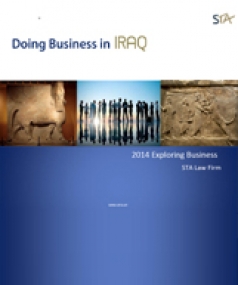Prior Use of Patented Inventions in India
“Patents are not forever, but inventions are”― Kalyan C. Kankanala
 The word “prior use of patented inventions” is used when the invention underlying a patent application is being used before documenting the patent application. The rights have a common view however at that point it must be determined differentially across the jurisdictions in light of the territorial nature of patents. One significant element that should be addressed is the “prior”, that is the filing date of the patent application, the “first to file” rule. For a nation that follows the “first to invent” rule, the matter is even challenging to choose as, without an order of a date of filing a patent application, it is scrupulous to conclude the “prior”.
The word “prior use of patented inventions” is used when the invention underlying a patent application is being used before documenting the patent application. The rights have a common view however at that point it must be determined differentially across the jurisdictions in light of the territorial nature of patents. One significant element that should be addressed is the “prior”, that is the filing date of the patent application, the “first to file” rule. For a nation that follows the “first to invent” rule, the matter is even challenging to choose as, without an order of a date of filing a patent application, it is scrupulous to conclude the “prior”.
A patent is an innovation of a novel gadget, device, or a novel process for making them. An invention can be derived from a previous concept or definitely known idea. It can likewise be an independently novel invention of a person. Generally, an invention should be novel, has an innovative step, and should be industrially applicable. Anything that happened in nature, living and non-living things, mathematical and arithmetic formulae anything which is against the ethical quality of society or differentiation to nature is not treated as an invention.
Patented Invention in India
Section 2 (j) of the Indian patent act of 1970 defines an invention as a product or process involving an innovative step and industrially applicable. Under the same act, a new invention means any invention which is not anticipated by any publication used in the country or anywhere in the world before the date of filing of the patent application containing complete specification. A patented invention under Patents Act 1970 is the invention that is granted a patent. section 3 of the Indian Patent Act 1970 has listed that is not an invention and are unpatentable. The Patent Act keeps from patenting frivolous inventions contrary to nature, living and non-living things except microorganisms, plants, and processes for medicinal, surgical, curative, and diagnostic methods. Section 3 (c) to (f) is to prevent the granting of patents to the technology which are more or less the same.
Prior Use of Patented Inventions
 In India, for secret use, at the very start, a court may revoke the patent for any such utilization of the invention in India. Under Section 64(1)(l) of the Indian Patents Act 1970, if any invention claimed in any claim of the complete specification was used in India before the priority date of the claim. The Indian Patent Act of 1970 has a provision to protect a patent application with prior use of the underlying invention in Section 34. It states that a patent will not be repudiated or invalidated by reason for any conditions. By virtue of Section 34, an invention that is disclosed before society or before the public authority or government person while on duty to test the efficacy of the invention, prior to the publication by the inventors is not considered anticipation. However, the patent application concerning these inventions should be filed within 12 months of the public disclosure.
In India, for secret use, at the very start, a court may revoke the patent for any such utilization of the invention in India. Under Section 64(1)(l) of the Indian Patents Act 1970, if any invention claimed in any claim of the complete specification was used in India before the priority date of the claim. The Indian Patent Act of 1970 has a provision to protect a patent application with prior use of the underlying invention in Section 34. It states that a patent will not be repudiated or invalidated by reason for any conditions. By virtue of Section 34, an invention that is disclosed before society or before the public authority or government person while on duty to test the efficacy of the invention, prior to the publication by the inventors is not considered anticipation. However, the patent application concerning these inventions should be filed within 12 months of the public disclosure.
As to the public display as well as comparing the use for an invention prior to the grant of the patent, there is a milestone case, Nicholson v. the city of Elizabeth, NJ. The fact of the case referred is as follows:
“Nicholson invented a wooden pavement and its process of manufacturing and his invention is in an avenue in the city of Boston to confirm and determine the strength and durability of the same at his own cost. He sued the city of Elizabeth for infringing his patent which was countered because of the public use. Therefore, the inquiry was whether an inventor’s trial involves in a special case like this mandated the thorough day-to-day use by the passers-by in order to confirm the strength of the underlying invention constitutes a “prior public use”. The court considered the intention of the inventor to use the piece of pavement as an experiment mandating a public use, and held that as “experimental use” and not “prior public use”. The court further held that the invention to the public may happen if the invention is on sale with the inventor’s consent at any time within 1 year prior to his patent application”.
 Activities during the preliminary work for a job connected with the invention may not constitute prior use. To constitute “prior use” the patent application is to be filed for the same process by a third party. Therefore, to forestall these difficulties, an individual or entity should file a provisional patent application to cover its product/ process, even during the preliminary stage that is prior to the actual commencement of production. Even if somebody tries to files a patent application for covering the process, then the user will have a priority date and this will reinforce or establish the "prior use" requirement. A provisional patent application along with data on the working of the process is a good idea to protect from any predatory entity. This will be specified in the patent document along with dates. A provisional patent application is a document on record which is not published. It can be used in litigation because it turns into a dated record and a certified copy of that document is available from the Patent Office. Such document may likewise be used for establishing secret use, for repudiation of a patent. This might protect in a better manner than that of a standard notarial document due to inherent confidentiality.
Activities during the preliminary work for a job connected with the invention may not constitute prior use. To constitute “prior use” the patent application is to be filed for the same process by a third party. Therefore, to forestall these difficulties, an individual or entity should file a provisional patent application to cover its product/ process, even during the preliminary stage that is prior to the actual commencement of production. Even if somebody tries to files a patent application for covering the process, then the user will have a priority date and this will reinforce or establish the "prior use" requirement. A provisional patent application along with data on the working of the process is a good idea to protect from any predatory entity. This will be specified in the patent document along with dates. A provisional patent application is a document on record which is not published. It can be used in litigation because it turns into a dated record and a certified copy of that document is available from the Patent Office. Such document may likewise be used for establishing secret use, for repudiation of a patent. This might protect in a better manner than that of a standard notarial document due to inherent confidentiality.
To conclude, the patentability of an invention is subject to all patentability requirements provided under the Patents Act. The word “prior use of patented inventions” is used when the invention underlying a patent application is being used before documenting the patent application. To forestall these difficulties of prior use the individual or entity should file a provisional patent application to cover its product/ process.
 English
English
 عربي
عربي Русский
Русский 官话
官话 português
português
 Türk
Türk 




